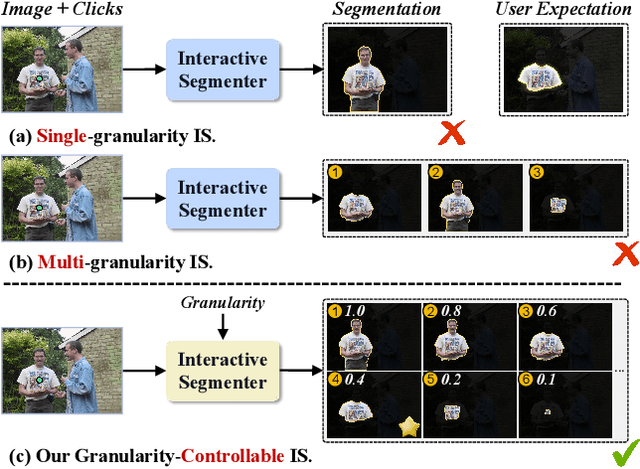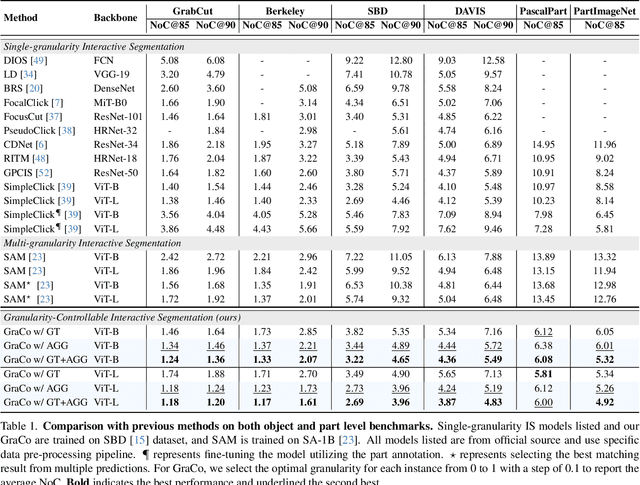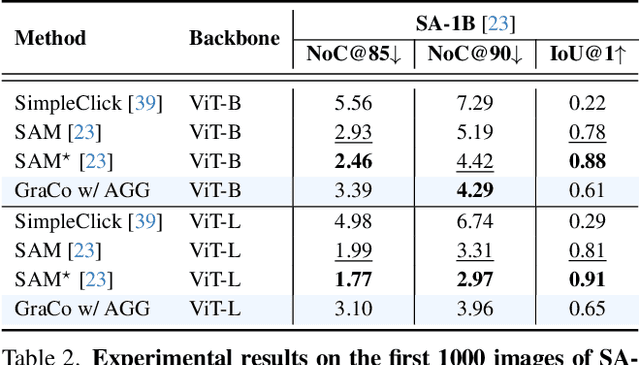Yian Zhao
E-4DGS: High-Fidelity Dynamic Reconstruction from the Multi-view Event Cameras
Aug 13, 2025Abstract:Novel view synthesis and 4D reconstruction techniques predominantly rely on RGB cameras, thereby inheriting inherent limitations such as the dependence on adequate lighting, susceptibility to motion blur, and a limited dynamic range. Event cameras, offering advantages of low power, high temporal resolution and high dynamic range, have brought a new perspective to addressing the scene reconstruction challenges in high-speed motion and low-light scenes. To this end, we propose E-4DGS, the first event-driven dynamic Gaussian Splatting approach, for novel view synthesis from multi-view event streams with fast-moving cameras. Specifically, we introduce an event-based initialization scheme to ensure stable training and propose event-adaptive slicing splatting for time-aware reconstruction. Additionally, we employ intensity importance pruning to eliminate floating artifacts and enhance 3D consistency, while incorporating an adaptive contrast threshold for more precise optimization. We design a synthetic multi-view camera setup with six moving event cameras surrounding the object in a 360-degree configuration and provide a benchmark multi-view event stream dataset that captures challenging motion scenarios. Our approach outperforms both event-only and event-RGB fusion baselines and paves the way for the exploration of multi-view event-based reconstruction as a novel approach for rapid scene capture.
iSegMan: Interactive Segment-and-Manipulate 3D Gaussians
May 17, 2025Abstract:The efficient rendering and explicit nature of 3DGS promote the advancement of 3D scene manipulation. However, existing methods typically encounter challenges in controlling the manipulation region and are unable to furnish the user with interactive feedback, which inevitably leads to unexpected results. Intuitively, incorporating interactive 3D segmentation tools can compensate for this deficiency. Nevertheless, existing segmentation frameworks impose a pre-processing step of scene-specific parameter training, which limits the efficiency and flexibility of scene manipulation. To deliver a 3D region control module that is well-suited for scene manipulation with reliable efficiency, we propose interactive Segment-and-Manipulate 3D Gaussians (iSegMan), an interactive segmentation and manipulation framework that only requires simple 2D user interactions in any view. To propagate user interactions to other views, we propose Epipolar-guided Interaction Propagation (EIP), which innovatively exploits epipolar constraint for efficient and robust interaction matching. To avoid scene-specific training to maintain efficiency, we further propose the novel Visibility-based Gaussian Voting (VGV), which obtains 2D segmentations from SAM and models the region extraction as a voting game between 2D Pixels and 3D Gaussians based on Gaussian visibility. Taking advantage of the efficient and precise region control of EIP and VGV, we put forth a Manipulation Toolbox to implement various functions on selected regions, enhancing the controllability, flexibility and practicality of scene manipulation. Extensive results on 3D scene manipulation and segmentation tasks fully demonstrate the significant advantages of iSegMan. Project page is available at https://zhao-yian.github.io/iSegMan.
Kongzi: A Historical Large Language Model with Fact Enhancement
Apr 13, 2025Abstract:The capabilities of the latest large language models (LLMs) have been extended from pure natural language understanding to complex reasoning tasks. However, current reasoning models often exhibit factual inaccuracies in longer reasoning chains, which poses challenges for historical reasoning and limits the potential of LLMs in complex, knowledge-intensive tasks. Historical studies require not only the accurate presentation of factual information but also the ability to establish cross-temporal correlations and derive coherent conclusions from fragmentary and often ambiguous sources. To address these challenges, we propose Kongzi, a large language model specifically designed for historical analysis. Through the integration of curated, high-quality historical data and a novel fact-reinforcement learning strategy, Kongzi demonstrates strong factual alignment and sophisticated reasoning depth. Extensive experiments on tasks such as historical question answering and narrative generation demonstrate that Kongzi outperforms existing models in both factual accuracy and reasoning depth. By effectively addressing the unique challenges inherent in historical texts, Kongzi sets a new standard for the development of accurate and reliable LLMs in professional domains.
MagicComp: Training-free Dual-Phase Refinement for Compositional Video Generation
Mar 18, 2025Abstract:Text-to-video (T2V) generation has made significant strides with diffusion models. However, existing methods still struggle with accurately binding attributes, determining spatial relationships, and capturing complex action interactions between multiple subjects. To address these limitations, we propose MagicComp, a training-free method that enhances compositional T2V generation through dual-phase refinement. Specifically, (1) During the Conditioning Stage: We introduce the Semantic Anchor Disambiguation to reinforces subject-specific semantics and resolve inter-subject ambiguity by progressively injecting the directional vectors of semantic anchors into original text embedding; (2) During the Denoising Stage: We propose Dynamic Layout Fusion Attention, which integrates grounding priors and model-adaptive spatial perception to flexibly bind subjects to their spatiotemporal regions through masked attention modulation. Furthermore, MagicComp is a model-agnostic and versatile approach, which can be seamlessly integrated into existing T2V architectures. Extensive experiments on T2V-CompBench and VBench demonstrate that MagicComp outperforms state-of-the-art methods, highlighting its potential for applications such as complex prompt-based and trajectory-controllable video generation. Project page: https://hong-yu-zhang.github.io/MagicComp-Page/.
ProGDF: Progressive Gaussian Differential Field for Controllable and Flexible 3D Editing
Dec 11, 2024



Abstract:3D editing plays a crucial role in editing and reusing existing 3D assets, thereby enhancing productivity. Recently, 3DGS-based methods have gained increasing attention due to their efficient rendering and flexibility. However, achieving desired 3D editing results often requires multiple adjustments in an iterative loop, resulting in tens of minutes of training time cost for each attempt and a cumbersome trial-and-error cycle for users. This in-the-loop training paradigm results in a poor user experience. To address this issue, we introduce the concept of process-oriented modelling for 3D editing and propose the Progressive Gaussian Differential Field (ProGDF), an out-of-loop training approach that requires only a single training session to provide users with controllable editing capability and variable editing results through a user-friendly interface in real-time. ProGDF consists of two key components: Progressive Gaussian Splatting (PGS) and Gaussian Differential Field (GDF). PGS introduces the progressive constraint to extract the diverse intermediate results of the editing process and employs rendering quality regularization to improve the quality of these results. Based on these intermediate results, GDF leverages a lightweight neural network to model the editing process. Extensive results on two novel applications, namely controllable 3D editing and flexible fine-grained 3D manipulation, demonstrate the effectiveness, practicality and flexibility of the proposed ProGDF.
RT-DETRv2: Improved Baseline with Bag-of-Freebies for Real-Time Detection Transformer
Jul 24, 2024Abstract:In this report, we present RT-DETRv2, an improved Real-Time DEtection TRansformer (RT-DETR). RT-DETRv2 builds upon the previous state-of-the-art real-time detector, RT-DETR, and opens up a set of bag-of-freebies for flexibility and practicality, as well as optimizing the training strategy to achieve enhanced performance. To improve the flexibility, we suggest setting a distinct number of sampling points for features at different scales in the deformable attention to achieve selective multi-scale feature extraction by the decoder. To enhance practicality, we propose an optional discrete sampling operator to replace the grid_sample operator that is specific to RT-DETR compared to YOLOs. This removes the deployment constraints typically associated with DETRs. For the training strategy, we propose dynamic data augmentation and scale-adaptive hyperparameters customization to improve performance without loss of speed. Source code and pre-trained models will be available at https://github.com/lyuwenyu/RT-DETR.
GraCo: Granularity-Controllable Interactive Segmentation
May 01, 2024



Abstract:Interactive Segmentation (IS) segments specific objects or parts in the image according to user input. Current IS pipelines fall into two categories: single-granularity output and multi-granularity output. The latter aims to alleviate the spatial ambiguity present in the former. However, the multi-granularity output pipeline suffers from limited interaction flexibility and produces redundant results. In this work, we introduce Granularity-Controllable Interactive Segmentation (GraCo), a novel approach that allows precise control of prediction granularity by introducing additional parameters to input. This enhances the customization of the interactive system and eliminates redundancy while resolving ambiguity. Nevertheless, the exorbitant cost of annotating multi-granularity masks and the lack of available datasets with granularity annotations make it difficult for models to acquire the necessary guidance to control output granularity. To address this problem, we design an any-granularity mask generator that exploits the semantic property of the pre-trained IS model to automatically generate abundant mask-granularity pairs without requiring additional manual annotation. Based on these pairs, we propose a granularity-controllable learning strategy that efficiently imparts the granularity controllability to the IS model. Extensive experiments on intricate scenarios at object and part levels demonstrate that our GraCo has significant advantages over previous methods. This highlights the potential of GraCo to be a flexible annotation tool, capable of adapting to diverse segmentation scenarios. The project page: https://zhao-yian.github.io/GraCo.
DETRs Beat YOLOs on Real-time Object Detection
Apr 17, 2023



Abstract:Recently, end-to-end transformer-based detectors (DETRs) have achieved remarkable performance. However, the issue of the high computational cost of DETRs has not been effectively addressed, limiting their practical application and preventing them from fully exploiting the benefits of no post-processing, such as non-maximum suppression (NMS). In this paper, we first analyze the influence of NMS in modern real-time object detectors on inference speed, and establish an end-to-end speed benchmark. To avoid the inference delay caused by NMS, we propose a Real-Time DEtection TRansformer (RT-DETR), the first real-time end-to-end object detector to our best knowledge. Specifically, we design an efficient hybrid encoder to efficiently process multi-scale features by decoupling the intra-scale interaction and cross-scale fusion, and propose IoU-aware query selection to improve the initialization of object queries. In addition, our proposed detector supports flexibly adjustment of the inference speed by using different decoder layers without the need for retraining, which facilitates the practical application of real-time object detectors. Our RT-DETR-L achieves 53.0% AP on COCO val2017 and 114 FPS on T4 GPU, while RT-DETR-X achieves 54.8% AP and 74 FPS, outperforming all YOLO detectors of the same scale in both speed and accuracy. Furthermore, our RT-DETR-R50 achieves 53.1% AP and 108 FPS, outperforming DINO-Deformable-DETR-R50 by 2.2% AP in accuracy and by about 21 times in FPS. Source code and pretrained models will be available at PaddleDetection.
Multi-granularity Interaction Simulation for Unsupervised Interactive Segmentation
Mar 23, 2023Abstract:Interactive segmentation enables users to segment as needed by providing cues of objects, which introduces human-computer interaction for many fields, such as image editing and medical image analysis. Typically, massive and expansive pixel-level annotations are spent to train deep models by object-oriented interactions with manually labeled object masks. In this work, we reveal that informative interactions can be made by simulation with semantic-consistent yet diverse region exploration in an unsupervised paradigm. Concretely, we introduce a Multi-granularity Interaction Simulation (MIS) approach to open up a promising direction for unsupervised interactive segmentation. Drawing on the high-quality dense features produced by recent self-supervised models, we propose to gradually merge patches or regions with similar features to form more extensive regions and thus, every merged region serves as a semantic-meaningful multi-granularity proposal. By randomly sampling these proposals and simulating possible interactions based on them, we provide meaningful interaction at multiple granularities to teach the model to understand interactions. Our MIS significantly outperforms non-deep learning unsupervised methods and is even comparable with some previous deep-supervised methods without any annotation.
Position Embedding Needs an Independent Layer Normalization
Dec 22, 2022Abstract:The Position Embedding (PE) is critical for Vision Transformers (VTs) due to the permutation-invariance of self-attention operation. By analyzing the input and output of each encoder layer in VTs using reparameterization and visualization, we find that the default PE joining method (simply adding the PE and patch embedding together) operates the same affine transformation to token embedding and PE, which limits the expressiveness of PE and hence constrains the performance of VTs. To overcome this limitation, we propose a simple, effective, and robust method. Specifically, we provide two independent layer normalizations for token embeddings and PE for each layer, and add them together as the input of each layer's Muti-Head Self-Attention module. Since the method allows the model to adaptively adjust the information of PE for different layers, we name it as Layer-adaptive Position Embedding, abbreviated as LaPE. Extensive experiments demonstrate that LaPE can improve various VTs with different types of PE and make VTs robust to PE types. For example, LaPE improves 0.94% accuracy for ViT-Lite on Cifar10, 0.98% for CCT on Cifar100, and 1.72% for DeiT on ImageNet-1K, which is remarkable considering the negligible extra parameters, memory and computational cost brought by LaPE. The code is publicly available at https://github.com/Ingrid725/LaPE.
 Add to Chrome
Add to Chrome Add to Firefox
Add to Firefox Add to Edge
Add to Edge